Full Stack Web Development: A Complete Guide
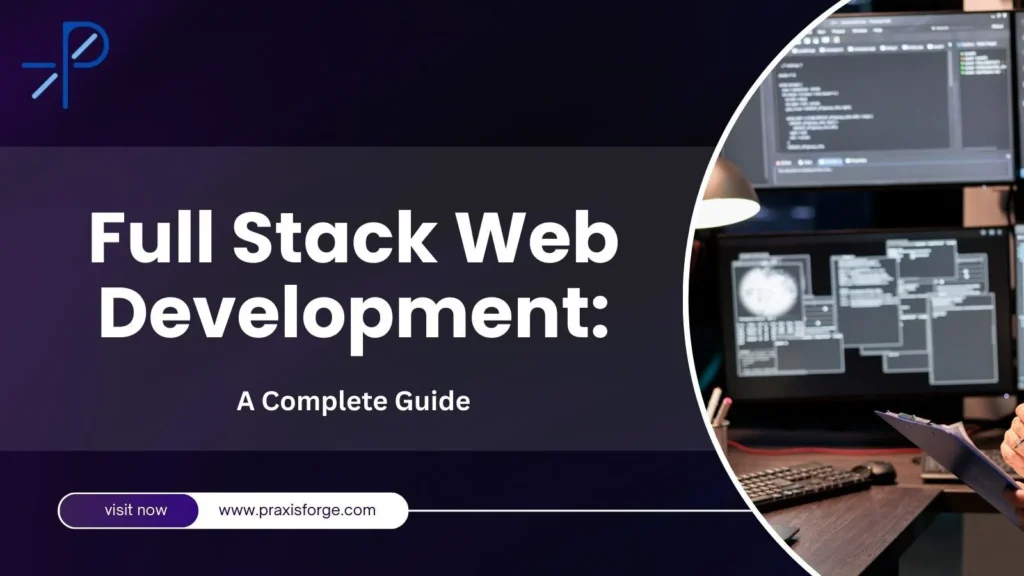
In today’s digital era, every business needs a well-designed, functional, and responsive website. This is where Full Stack Web Development comes in—a skill set that enables developers to build complete websites and applications from start to finish.
Unlike specialized developers who focus only on front-end or back-end, a Full Stack Developer works across both layers, making them highly versatile and valuable in the industry. If you’re looking to become one or hire one, this guide will help you understand the role, skills, technologies, and opportunities in Full Stack Web Development.
What is Full Stack Web Development?
Full Stack Web Development refers to the ability to design, build, and maintain both the front-end and back-end of a web application.
- Front-end development deals with everything users see and interact with in the browser. It includes HTML, CSS, and JavaScript along with frameworks like React, Angular, or Vue.js. The goal here is to ensure an attractive, responsive, and user-friendly interface.
- Back-end development focuses on the behind-the-scenes functionality—databases, servers, authentication, and APIs. It involves programming languages such as Node.js, Python, PHP, Java, or Ruby, along with database systems like MySQL, MongoDB, or PostgreSQL.
A Full Stack Developer bridges both worlds, managing how the user interacts with the site and how the site processes and stores information in the background.
Key Skills of a Full Stack Developer
- Front-End Skills
- Proficiency in HTML, CSS, JavaScript
- Knowledge of frameworks like React, Angular, Vue.js
- Experience with responsive and mobile-friendly design
- Back-End Skills
- Expertise in server-side languages: Node.js, Python, Ruby, PHP, Java
- Familiarity with frameworks like Express.js, Django, Ruby on Rails
- Understanding of authentication, APIs, and data handling
- Database Management
- SQL databases: MySQL, PostgreSQL
- NoSQL databases: MongoDB, Firebase
- Version Control & Deployment
- Git/GitHub for collaboration and code tracking
- Knowledge of deployment environments like Linux, Apache, Nginx, Docker
- Soft Skills
- Problem-solving mindset
- Strong collaboration and teamwork skills
- Adaptability to learn new technologies quickly
Benefits of Full Stack Development
- End-to-End Expertise: Full Stack Developers can manage the complete project lifecycle.
- Cost-Effective: One developer can handle multiple aspects, reducing hiring costs.
- Faster Development: Streamlined communication and quicker project turnaround.
- Scalability: Build applications capable of handling increasing user demand.
- Versatility: Adapt easily to new frameworks, languages, and project needs.
Why Learn Full Stack Development?
With businesses shifting online rapidly, demand for Full Stack Developers is soaring. Companies value professionals who can deliver complete solutions rather than depending on multiple specialists.
If you’re aspiring to enter this field, consider learning through structured programs and hands-on projects. One such platform is Praxis Forge, which provides practical courses to help you master both front-end and back-end development.
👉 Check out Praxis Forge here: https://praxisforge.com/
Final Thoughts
Full Stack Web Development is not just a technical skill—it’s a career path that opens endless opportunities.
Whether you want to build your own applications, freelance, or land a job with a top company, becoming a Full Stack Developer is a smart choice.
If you’re ready to take the leap, start your journey today with a trusted learning platform like Praxis Forge.
👉 Visit Praxis Forge to explore Full Stack Development courses and resources.
FAQs About Full Stack Web Development
Q1. Is Full Stack Development difficult to learn?
It requires dedication, but with practice and step-by-step learning, anyone can master it. Start with front-end basics, then gradually move to back-end and databases.
Q2. How long does it take to become a Full Stack Developer?
On average, 6–12 months of consistent learning and hands-on practice are enough to gain job-ready skills.
Q3. Do Full Stack Developers earn more than specialized developers?
Yes. Since they manage both front-end and back-end development, they often earn higher salaries than specialists.
Q4. Which programming language is best for Full Stack Development?
JavaScript is widely used since it powers both front-end (React, Angular, Vue.js) and back-end (Node.js). However, Python, Java, and PHP are also popular choices.
Q5. Is Full Stack Development a good career in 2025 and beyond?
Absolutely. With the rapid digital transformation, demand for versatile developers is only expected to grow.
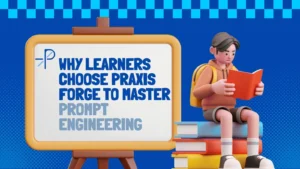
Why Learners Choose Praxis Forge to Master Prompt Engineering
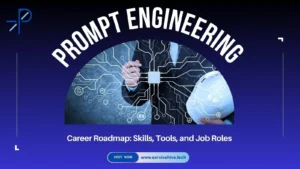
Prompt Engineering Career Roadmap: Skills Tools and Job Roles
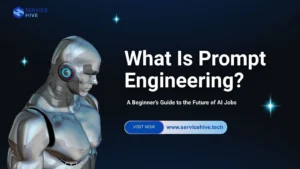
What Is Prompt Engineering? A Beginner’s Guide to the Future of AI Jobs
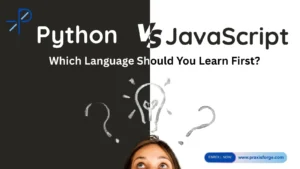
Python vs JavaScript: Which Language Should You Learn First?
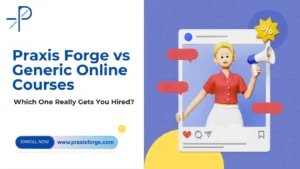
How Praxis Forge Teaches Prompt Engineering Differently from Other Platforms

